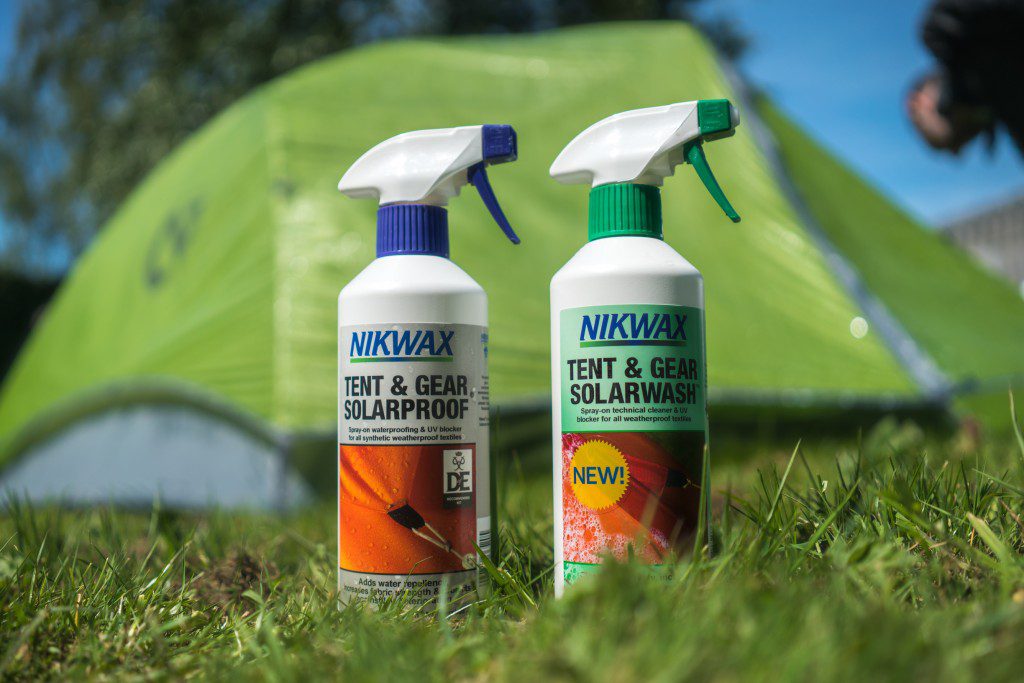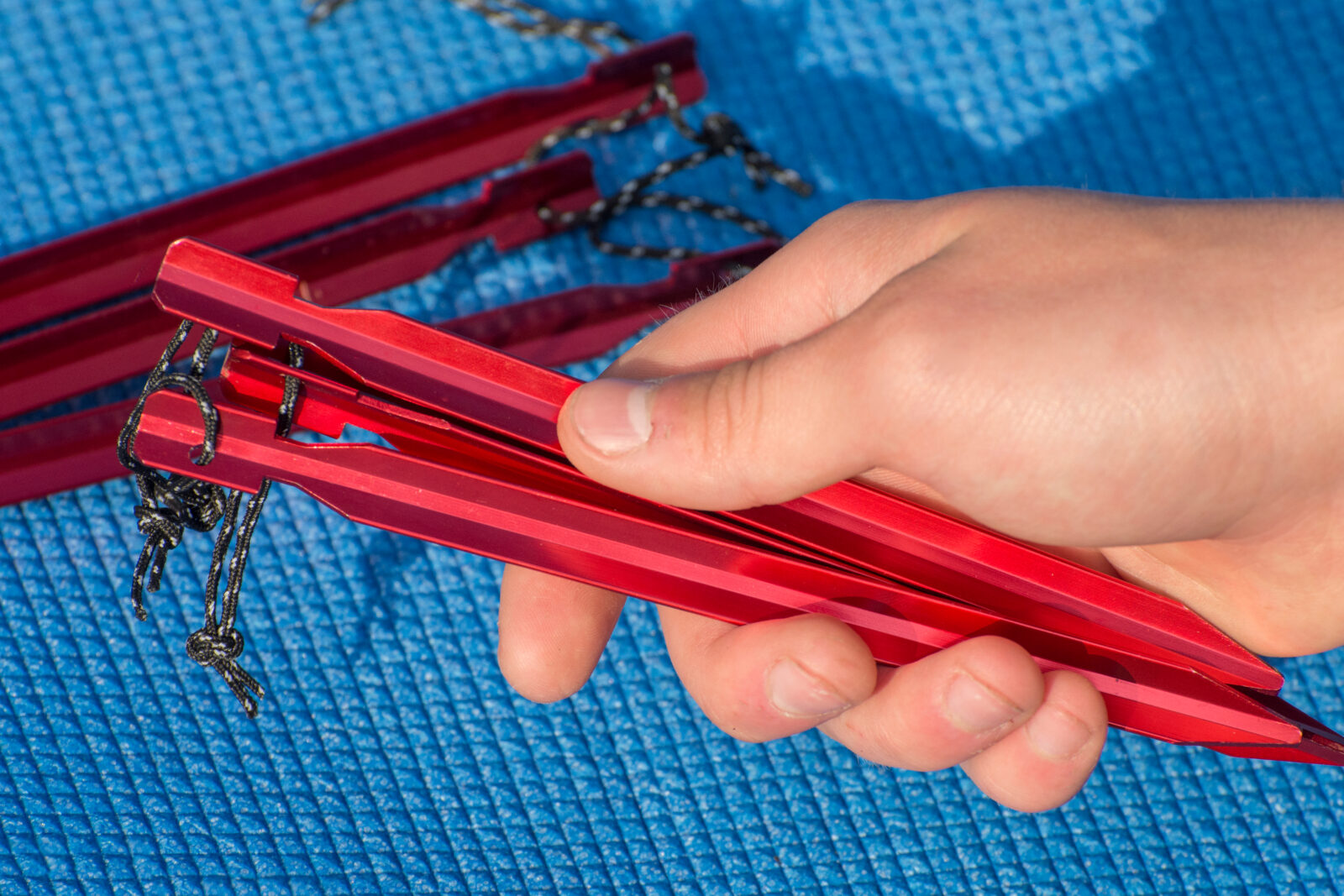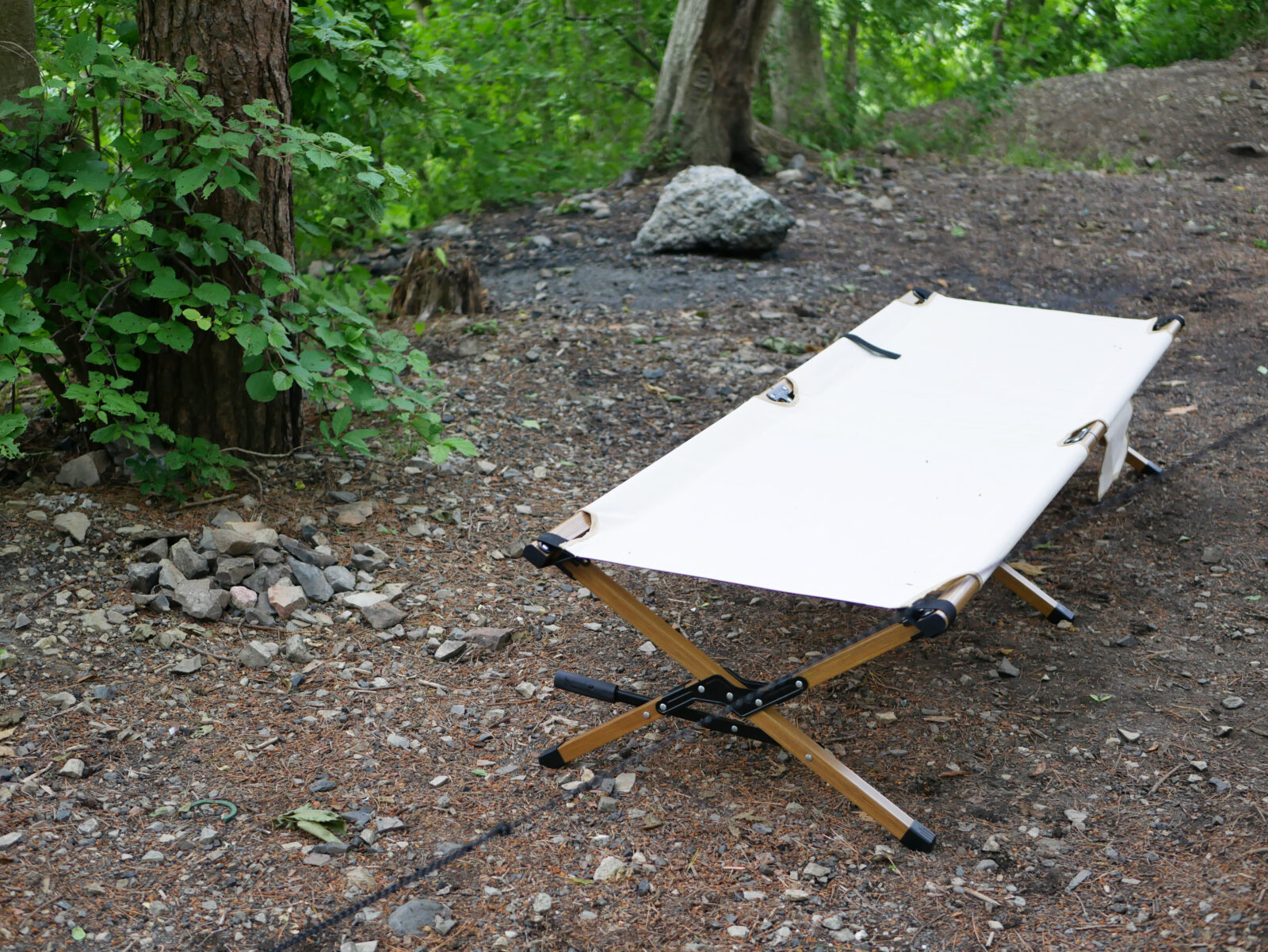Feeling a little nervous about the high winds in the forecast for your next camping trip?
We’ve been there, too.
High winds are nothing to scoff at, especially if you’re sleeping in a tent in the mountains. While windy weather might not be a deal back at home, when your main shelter for the night is a piece of ripstop nylon, it’s imperative that you know what to do to keep yourself safe during your adventures.
Luckily for you, we’re here to help.
In this guide, we’ll walk you through everything you need to know about how to camp safely in high winds.
Whether you’re brand-new to camping or you’re simply looking for some tips to ensure that your next trip in stormy conditions goes as smoothly as possible, we have the information you need right here.
1. Pack a smaller tent
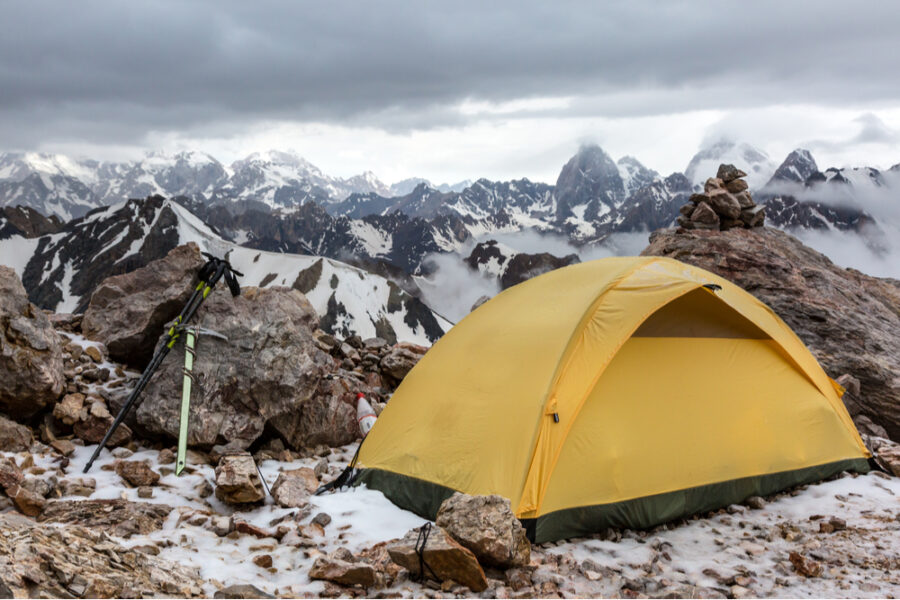
When camping in high winds, the integrity of your shelter is of the utmost importance. That’s why we strongly recommend that you invest in a small, windproof tent for your adventures.
While it might seem tempting to pack a spacious 2 room tent, those shelters are best for use at the campground in Joshua Tree than they are for use in the backcountry of Olympic National Park. Indeed, large glamping tents are designed more for comfort than for performance in foul weather, so they shouldn’t be your top choice in windy conditions.
As a result, packing a small, half dome or geodesic-shaped tent is going to be your best bet in the mountains. This type of shelter, which you can normally find in 2 person tents and 4 person tents, is going to perform much better in a gale.
So, when bad weather is in the forecast, pack a small backpacking-style tent. When the wind starts to blow, you’ll be glad that you did.
2. Learn how to anchor stakes properly
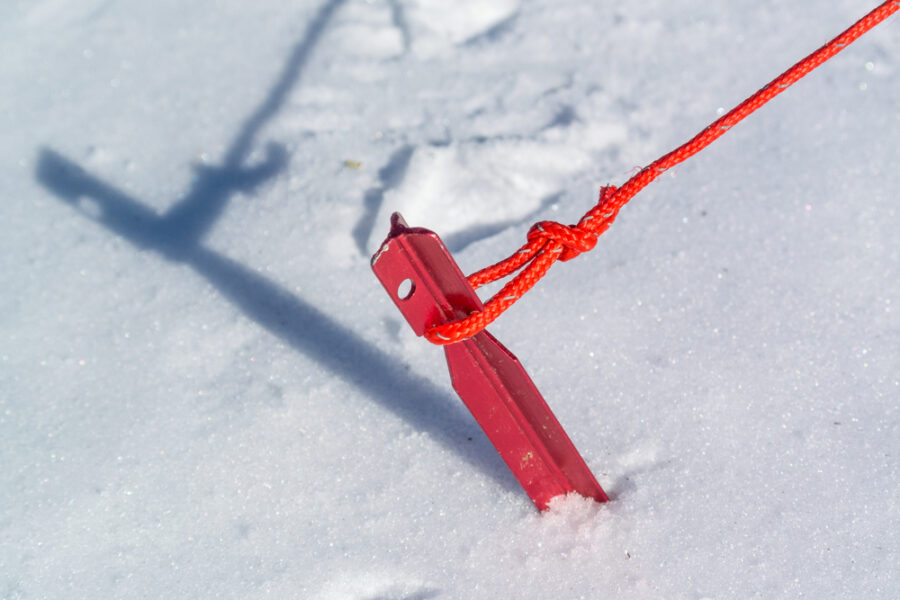
We know what you’re thinking: They’re just tent stakes. How could I possibly anchor them incorrectly?
It turns out that there are many different ways to anchor tent stakes, most of which really aren’t great for windy conditions. While simply sticking your stakes straight into the ground might be okay in calm weather, doing so is almost sure to fail when the wind starts to blow.
Therefore, we’d recommend placing your stakes in the ground so that they’re oriented at a 45º angle away from your tent. Doing so will help them stay in place, even under a lot of force.
In extremely windy conditions, though, you may want to ditch the stakes altogether. In these situations, attaching your guylines to rocks, trees, and large logs is often your best bet.
Read More : How to Camp Safely in High Winds
3. Become a knot-tying pro
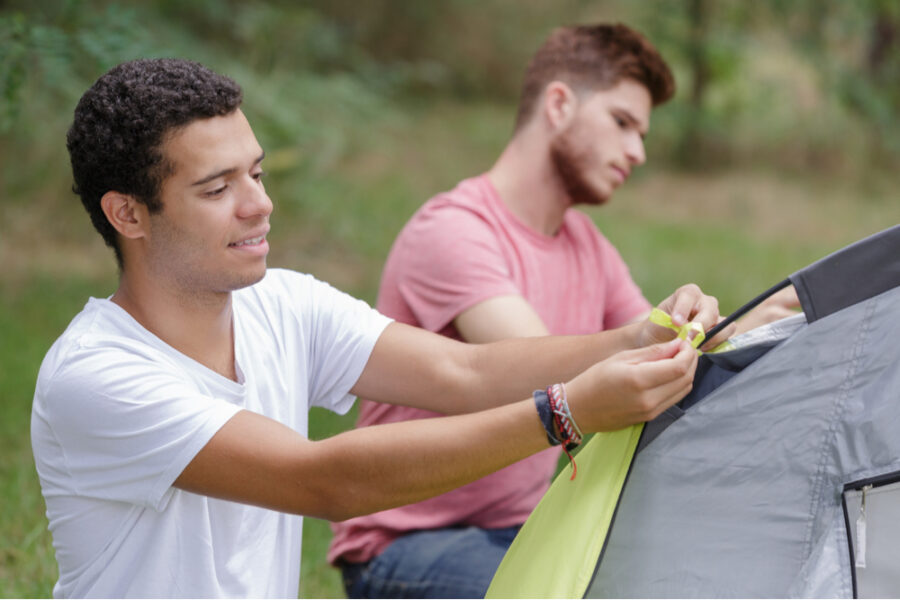
In addition to properly anchoring your tent stakes, you’ll also need to be fairly adept with tying knots if you want to safely camp in high winds. Since poorly tied guy lines are likely to come undone in windy conditions, tying your knots the right way is imperative.
Indeed, that old adage of if you don’t know a knot, tie a lot really doesn’t apply in the mountains. While you don’t need to be a world champion knot tying master, having a solid knowledge of about 5 to 10 knots will go a long way in the mountains.
We’d particularly recommend learning knots such as the bowline, the trucker’s hitch, the clove hitch, the taut-line hitch, and the figure eight on a bight. Being able to tie all of these knots will make your life much easier when you’re trying to stake out your tent in a gale.
4. Always stormproof your campsite
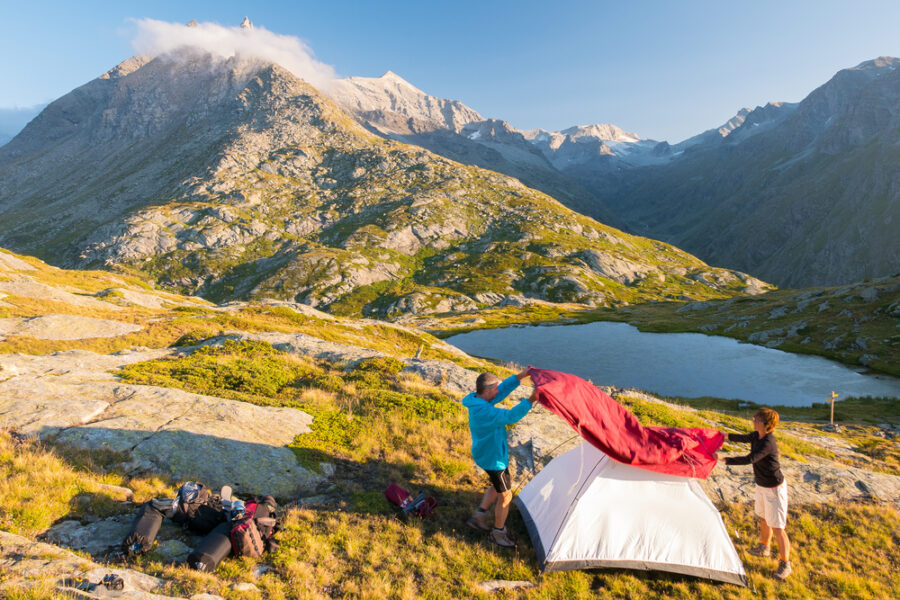
If you were to walk around any campground in Yosemite National Park on any given day, we could almost guarantee that you’d find camping gear absolutely everywhere. From camping chairs to coolers, we campers have a bad habit of leaving our gear lying around outside unattended.
In nice, calm conditions, this habit of leaving gear strewn about the campsite isn’t really a problem. But when the wind starts to pick up, we can assure you that leaving your gear outside is a surefire way to have it disappear forever.
That’s why anyone camping in windy conditions needs to be an expert in storm-proofing their campsite. The basic premise here is that you want to put all of your gear either in your hiking backpack or in your tent when it’s not in use.
Doing so will minimize the chance that your hiking boots will fly away, which is definitely not something you want to have happen when you’re in the mountains.
5. Find natural shelter
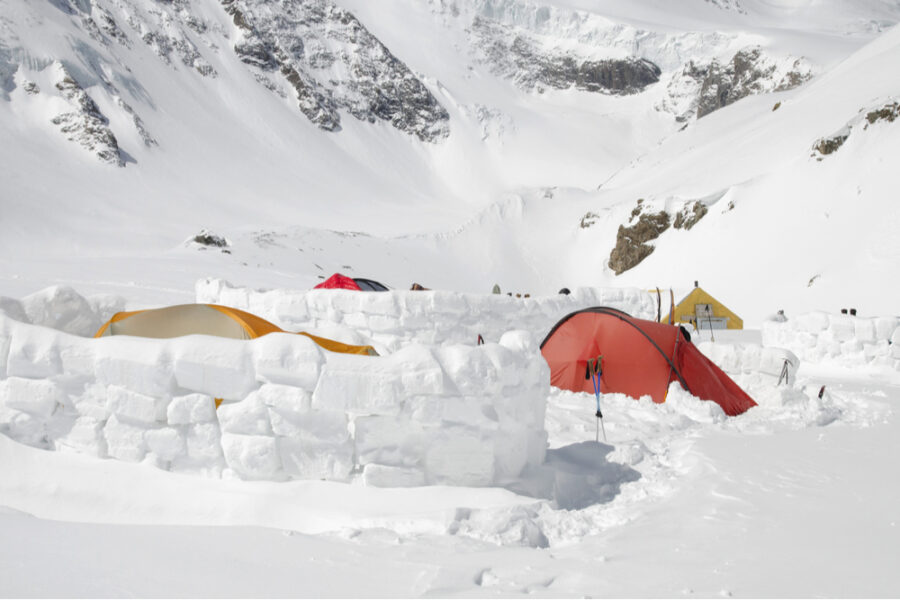
One of the best ways to keep yourself safe while camping in windy conditions is to seek out natural shelter. Of course, in wide-open terrain like you might find in Death Valley, this might not be possible.
But taking the time to find a campsite that’s tucked behind a stand of trees or a large boulder can pay dividends when the wind starts to howl.
Alternatively, if you’re winter camping, you could even think about building a windbreak wall out of snow to shield your tent. Anything is better than nothing when bad weather threatens your adventures.
Read More : How to Pick the Perfect Campsite
6. Keep an eye on the weather
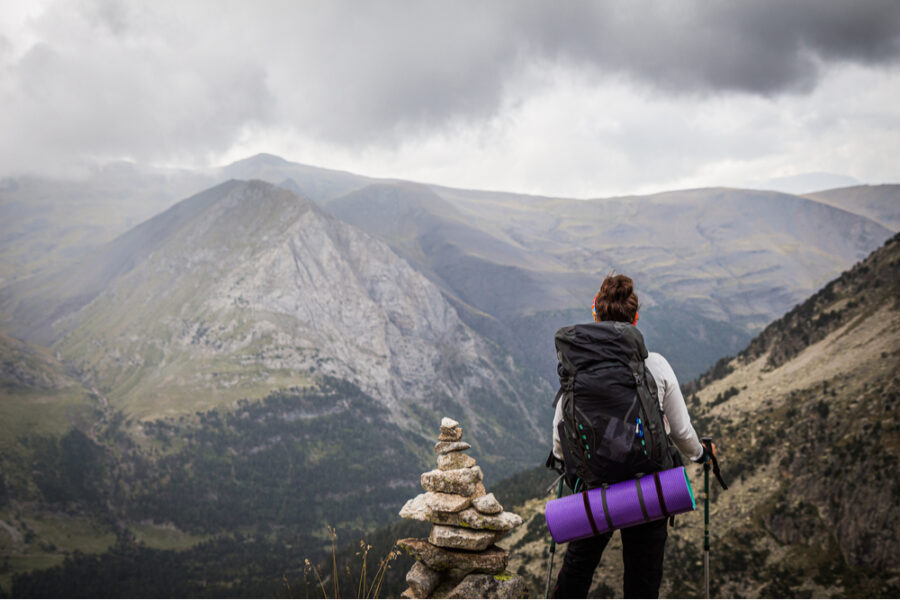
Even if you’re not particularly keen on cloud watching, keeping an eye out for the weather is of the utmost importance in the mountains.
In fact, relatively few camping trips are plagued with a constant stream of gale-force winds for more than a day at a time. So if bad weather is coming, you often see it on the horizon if you just look up at the sky.
While accurately forecasting the weather is a skill that requires quite a lot of time to develop, paying attention to the movement of the clouds above you is important.
You’ll especially want to look out for darkly-colored clouds that look like they extend upward throughout the entire sky. These are often cumulonimbus clouds and they can bring severe weather like thunderstorms, hail, and damaging straight-line winds.
If you see one of these clouds coming, you’ll have more time to stormproof your campsite and prepare for severe weather.
7. Camp with friends
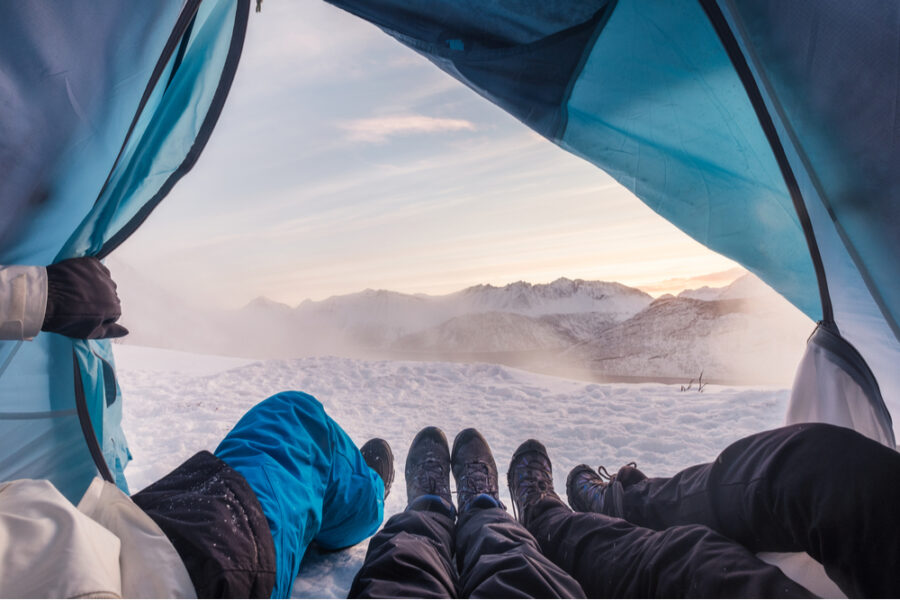
If you’re reading this article, you probably already know that camping in windy conditions can be dangerous. As a result, it’s often best to camp with friends when severe weather is underway just so you’re there to support each other if things get a bit hairy.
Furthermore, camping with friends simply makes things a whole lot easier when you’re faced with severe weather. If you’ve ever tried to set up a tent on your own in the wind, you know how much easier it is to anchor down guylines with an extra set of hands.
So, don’t be shy – invite some friends on your next trip. It’s a great way to bond and to ensure that you’ll have some extra helpers when you’re trying to set up camp at night, or even play some games together over a campfire.
8. Don’t cook inside your tent
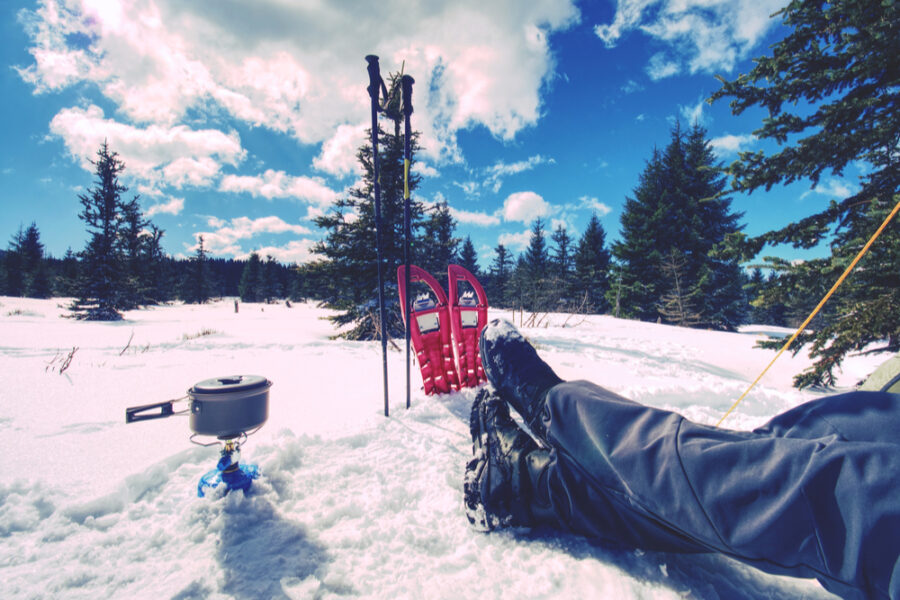
As tempting as it might be to bring your stove into your tent to cook instead of fighting with the wind outside, you really shouldn’t cook in your tent.
Why?
Well, camping stoves naturally produce carbon monoxide as a byproduct of burning camping fuel. When you’re outside, this normally isn’t a problem as the dangerous carbon monoxide is diluted by the atmosphere.
In your tent, however, the carbon monoxide can build up to dangerously high levels, which can lead to carbon monoxide poisoning – a life-threatening condition.
Long story short? Don’t cook in your tent. It’s better to be frustrated with cooking in windy conditions than it is to gamble with carbon monoxide poisoning.
Read More : Camping Stove Safety Precautions and Tips
9. Pack plenty of entertainment
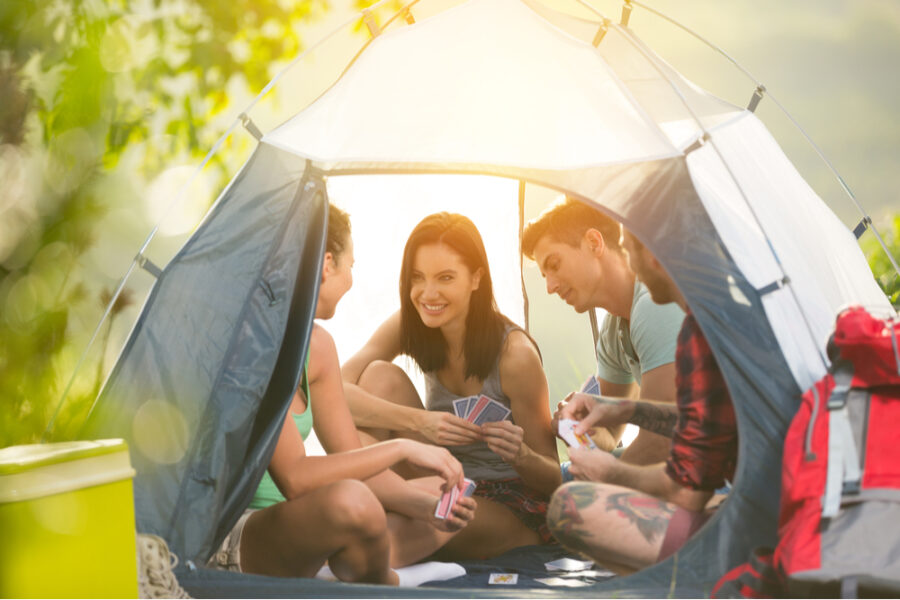
When it gets really, really windy outside, you may find that you’re stuck in your tent for extended periods of time riding out a storm. If this happens, you’ll definitely want to have some camping games on hand to keep you and your friends entertained during your trip.
While no one likes to be cooped up in a tent for hours on end, having games to play will definitely help the time fly by.
Don’t like games? Bring a book or a journal, instead. Just don’t forget to pack a headlamp, too, for reading and relaxing after the sun goes down.
Read More : 10 Fun Drinking Games to Keep the Campfire Going
10. Store your gear in your tent
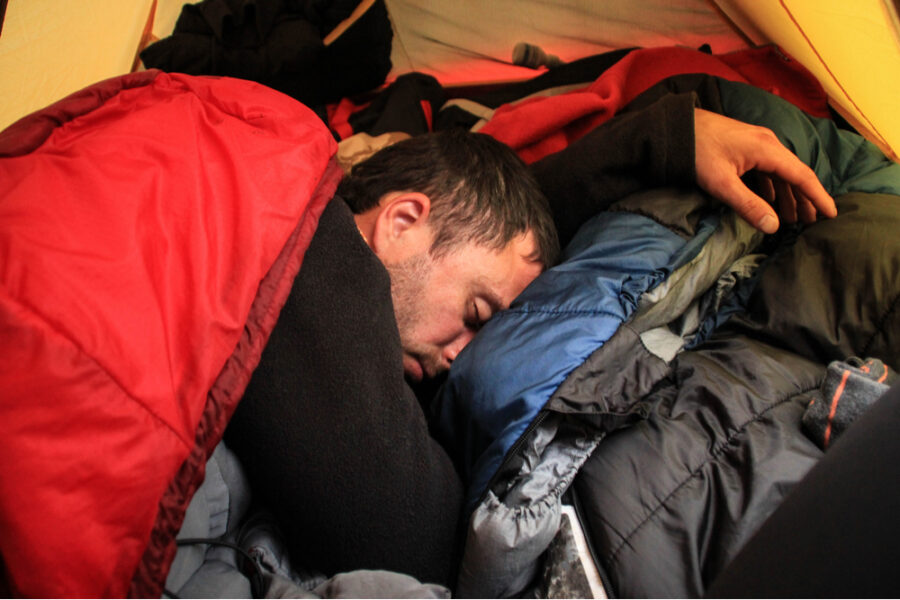
Our final piece of advice for camping safely in high winds is to store your gear inside your tent.
We’ve already talked about the importance of storm-proofing your campsite, so we won’t revisit those details here. But we should mention that stashing your gear in your tent has another benefit besides stopping your equipment from flying away.
In fact, storing gear in your tent helps to anchor down your shelter. In extremely windy environments, any extra weight that you can put in your tent to anchor it down can prevent your shelter from getting blown around in a gale.
While your tent isn’t likely to blow away with you in it, having gear stored in there when you’re not inside it can make a big difference.
Recommended Reads :
Gaby Pilson
Gaby is a professional mountain guide with a master’s degree in outdoor education. She works primarily in the polar regions as an expedition guide, though she can be found hiking, climbing, skiing, sailing, or paddling in some of the world’s most amazing places when not at work.
